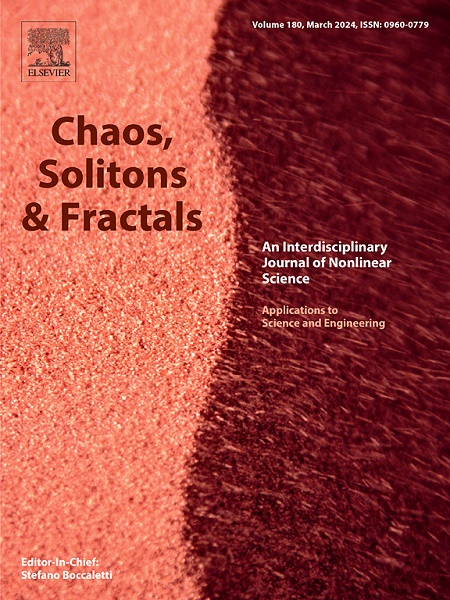电-热混合纳米流体在平行圆盘中的能量传输优化:Keller-Box模拟
IF 5.6
1区 数学
Q1 MATHEMATICS, INTERDISCIPLINARY APPLICATIONS
引用次数: 0
摘要
优化电热系统中的能量传输并提高其效率对先进的热管理和能源可持续性具有重要意义。目前的研究重点是分析具有时间依赖性的导电盘,它们承受对流热,并包含浸入水中的氧化铝和氧化石墨烯的可渗透介质。通过改进的傅里叶定律研究了热分布,即Cattaneo-Christov热流密度,通过Hamilton-Crosser纳米流体模型研究了电热导率。考虑了不同形状的纳米颗粒,即八面体、球形、圆柱形和叶片状。压缩混合纳米流体流动考虑了欧姆加热、霍尔效应和线性热辐射的影响。数值解在MATLAB中使用Keller-Box法计算,在Mathematica中使用NDSolve进行回归分析(预测值具有t统计量)。可见,挤压增强了压缩,形成了流体动量和对流换热。此外,八面体纳米颗粒表现出以增加热输运为主的行为。较高的福希海默数会增加惯性效应、非线性阻力和降低热效率。回归分析表明,在预测表面摩擦值时,挤压效应比霍尔效应更重要,尤其是在考虑叶片状纳米颗粒与其他形状纳米颗粒的比较时。这项研究的见解可以用于许多需要高效传热的工程和工业应用,例如冷却系统,电子设备和能量存储系统。本文章由计算机程序翻译,如有差异,请以英文原文为准。
Optimization of energy transport via electro-thermal hybrid nanofluid in parallel disks: A Keller-Box simulation
Optimizing energy transport and enhancing its efficiency in electro-thermal systems is of significant importance for advanced thermal management and energy sustainability. The present study focuses on the analysis of time-dependent electrically conducting disks enduring convective heat and comprising a permeable medium with Alumina and Graphene oxide immersed in water. The thermal distribution is studied via the modified Fourier law, namely the Cattaneo-Christov heat flux, and the electro-thermal conductivity through Hamilton-Crosser's nanofluid model. Different shapes of nanoparticles are considered, namely octahedron, spherical, cylindrical, and blade. The squeezing hybrid nanofluid flow considers the effects of Ohmic heating, the Hall effect, and linear thermal radiation. The numerical solutions are computed by Keller-Box method in MATLAB, while the regression analysis (predicted values with -statistic) is conducted through NDSolve in Mathematica. It is seen that squeezing enhances compression and develops fluid momentum and convective heat transfer. Moreover, octahedron-shaped nanoparticles show dominant increasing thermal transport behavior. Higher Forchheimer number increases inertial effects, nonlinear drag force, and reduced thermal efficiency. Regression analysis indicates that the squeezing effect predominates over the Hall effect in predicting skin friction values, particularly when considering blade-shaped nanoparticles compared to other shapes. The insights from this study can be used in many engineering and industrial applications where efficient heat transfer is required, such as in cooling systems, electronic devices, and energy storage systems.
求助全文
通过发布文献求助,成功后即可免费获取论文全文。
去求助
来源期刊

Chaos Solitons & Fractals
物理-数学跨学科应用
CiteScore
13.20
自引率
10.30%
发文量
1087
审稿时长
9 months
期刊介绍:
Chaos, Solitons & Fractals strives to establish itself as a premier journal in the interdisciplinary realm of Nonlinear Science, Non-equilibrium, and Complex Phenomena. It welcomes submissions covering a broad spectrum of topics within this field, including dynamics, non-equilibrium processes in physics, chemistry, and geophysics, complex matter and networks, mathematical models, computational biology, applications to quantum and mesoscopic phenomena, fluctuations and random processes, self-organization, and social phenomena.
 求助内容:
求助内容: 应助结果提醒方式:
应助结果提醒方式:


